Chrysler’s Stock Car Connection — Part 12
BACK TO BUSINESS: With Nichels as ready as he would ever be, the crew and equipment rolled into the opening of the ’67 race season and Daytona.
By Wm. R. LaDow Photos from “Conversations with a Winner—The Ray Nichels Story.”
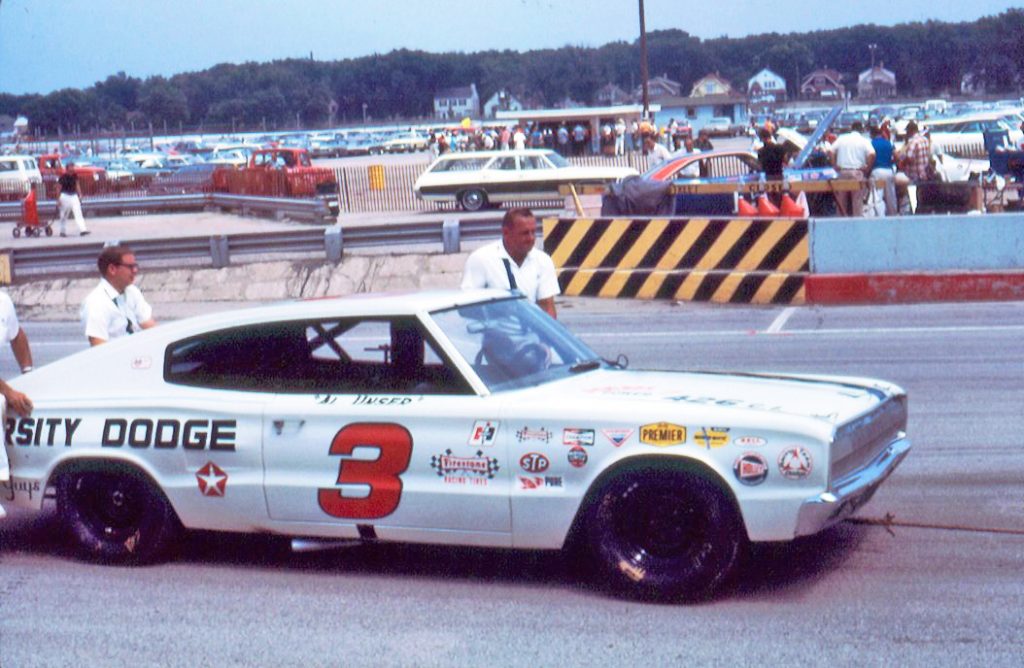
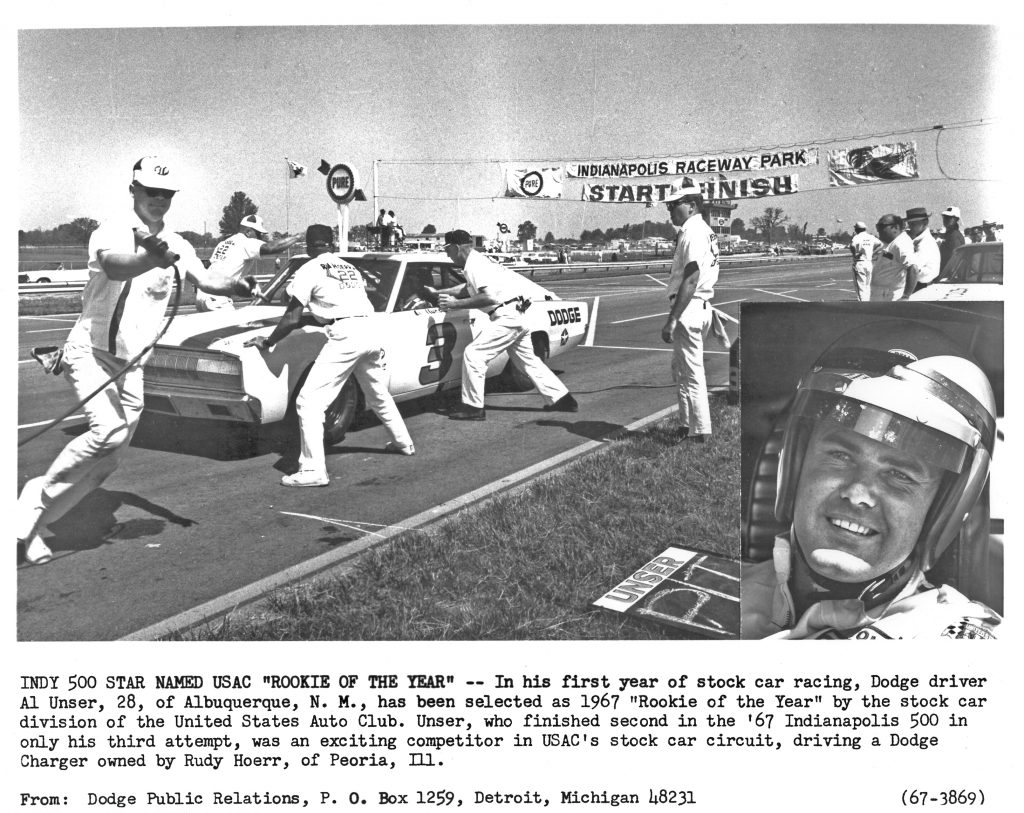
Back to Business
When we last left off, Nichels was gearing up in preparation for the 1967 race season. Snow had started falling.
Tragedy Strikes
As they began to dig themselves out at Nichels Engineering in Griffith, Indiana, a series of unique circumstances had already occurred across the country in Riverside, California at the Motor Trend 500. While practicing for the upcoming 500 mile race, 29 year-old Canadian driver Billy Foster crashed and lost his life on the 2.7 mile, winding road course. Onlookers said that Foster seemingly lost his brakes as he headed into turn nine at the end of the track’s mile-long straightaway. Driving one of the only two new 1967 Dodge Chargers ready for the Riverside race (David Pearson, was in the other), Billy ended up hitting the wall broadside, instantly ending his life. It was a terrible blow to race fans and drivers alike.
Foster, driving for Rudy Hoerr was a favorite among both drivers and owners and held a special place in the heart of many Canadian sports fans. The USAC Stock Car Rookie-of-the-Year in 1965, was the first Canadian to ever race in the Indianapolis 500 that same year, and had been working his way up American racing’s ladder of success. Billy and defending two-time National Indy Car Champion Mario Andretti had developed a close personal friendship during their racing days together and Foster’s loss was felt sharply by Mario. When Billy Foster was laid to rest in Victoria, British Columbia, it was reported that his funeral was the largest seen in Western Canada in over 40 years. The funeral procession alone was over one and half miles long.
Meanwhile, another NASCAR personality was lost with the passing of 47 year-old Darlington Raceway President, Bob Colvin, a good friend of Ray Nichels. (In fact it was the Robert Colvin Trophy, awarded to Ray and Nichels Engineering for setting the 24 hour stock car speed and endurance records at Darlington that eventually sat behind Ray’s office desk for 43 years.) With the losses of Friel, Foster and Colvin, Nichels feared that 1967 was going to be a very difficult year.
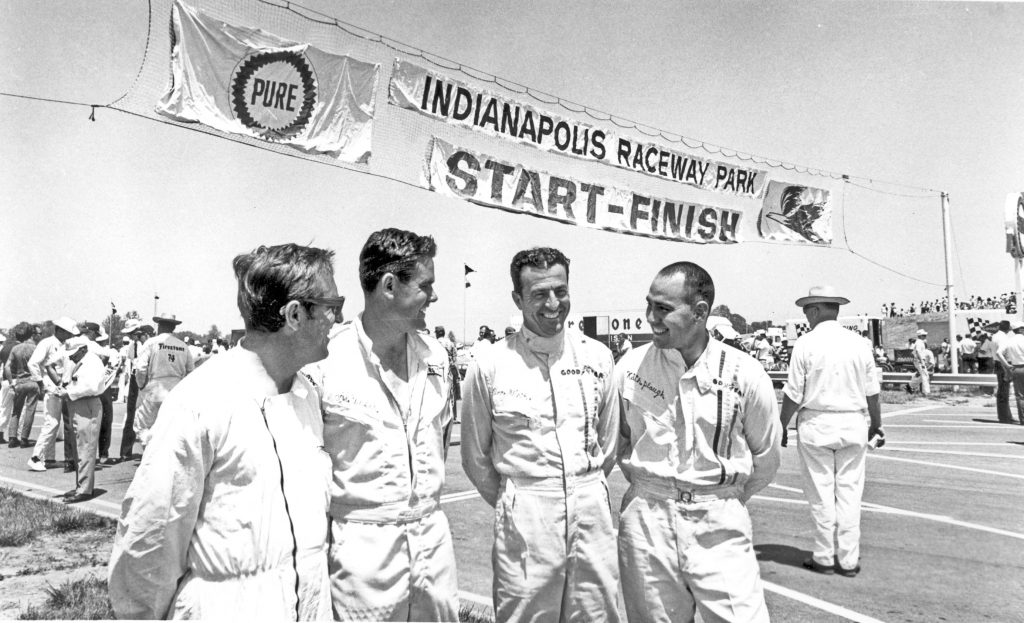
First Race of the Season
Whether they were ready to go racing or not, the season’s first contest was set for January 22nd. The Chrysler teams of Petty Enterprises, Nichels Engineering, Cotton Owens, Norm Nelson, Tom Friedkin and Jon Thorne were all represented, with only Owens and Friedkin running 1967 models. Everyone else decided to run year-old equipment and preserve their newer 1967 models for Daytona in February.
Pole winner for the race was one of the “Keokuk Komets,” Dick Hutcherson in the No. 29 Bondy Long Ford, setting a new track qualifying record of 106.666 miles per hour. Nichels teammates, Paul Goldsmith and Don White qualified in the 11th and 12th positions respectively, using their 1966 cars, while their new 1967s were being finished back in Indiana.
When the green flag flew the race was already in trouble due to rain. After 50 laps were run (10 of them under caution) the race was suspended until the following weekend. When the race resumed, it turned into a wreckfest, augmented by equipment failure. But there was one race team who once again mastered the huge, winding road course, the Wood Brothers. Using a Bill Stroppe prepared 1967 Ford Fairlane, driven by 33 year-old Parnelli Jones, the Wood Brothers, masters of the pit stop, won their fourth Motor Trend 500 in a row.
Jones using the lighting-fast Wood Brothers crew, the same Virginia based team that helped Jimmy Clark dominate the 1965 Indianapolis 500, led the final 100 laps and was leading by a full lap when he took checkered flag.
But it wasn’t a lost day for Ray Nichels and Chrysler Corporation as Plymouths and Dodges took the next four spots. Paul Goldsmith finished second, Norm Nelson third, Don White fourth and 1966 NASCAR Rookie-of-the-Year, James Hylton fifth. Although never one to be pleased by finishing second, Nichels knew it was a solid start for the 1967. He was even more pleased to witness a harbinger of things to come when Don White in his year-old Nichels Engineering No. 3 Dodge Charger snapped off an all-time record-setting backstretch speed clocked at 157.34 miles per hour.
Next on the race calendar was Daytona.
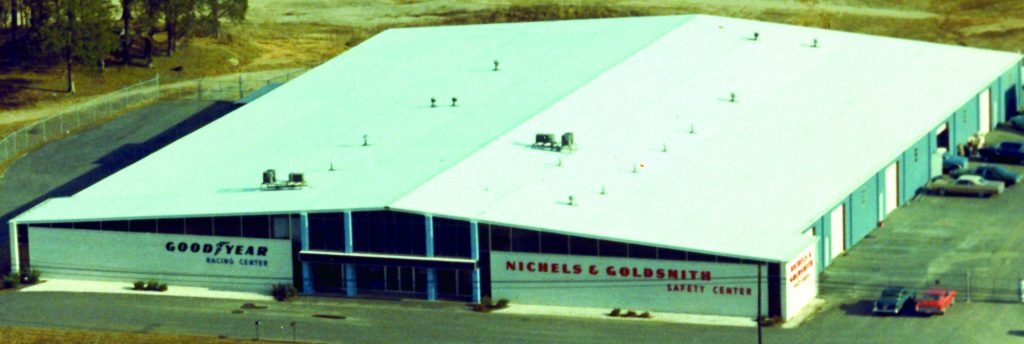
Daytona
For this, the unofficial start of the 1967 race season, the Chrysler combination of car owners and drivers was beginning to substantially change. The Nichels’ team only change was one of subtraction (with the exit of Sam McQuagg) now consisting of two entrants, Paul Goldsmith and Don White. Cotton Owens and David Pearson starting the season as defending NASCAR champions appeared to be a solid team. During the off season, Nord Krauskopf’s K&K Insurance team under the leadership of crew chief Harry Hyde hired former Nichels’ driver Bobby Isaac to run a limited schedule of 12-15 races in a 1967 Charger. Hyde also setup the team’s 1965 Dodge for Charlie Glotzbach to run in selected races.
For the new season, Ray Fox teamed with Buddy Baker, as he had done the last six races of 1966. For just Daytona, Fox employed Scotsman Innes Ireland to run in Ray’s year old Dodge Charger. Tom Friedkin had Jim Paschal back, along with west coast race driver Jerry Grant, both in 1967 Plymouths. Jon Thorne and LeeRoy Yarbrough teamed up again, but with a new crew chief, Mario Rossi and a new 1967 Charger. James Hylton would continue to drive a 1965 Dodge for owner Bud Hartje. Norm Nelson entered one car at Daytona with Jim Hurtubise behind the wheel. Also entering Daytona, for what appeared to be a two race effort was Ramo Stott in his self-sponsored 1966 Plymouth. Gordon Johncock returned to Daytona, this time in a 1967 Plymouth owned by R. L. Diestler. Paul Lewis, piloted another 1967 Plymouth, this one owned by A. J. King. Lastly, Richard Petty remained the centerpiece of Petty Enterprises’ team, with Tiny Lund wheeling a second Petty Plymouth at Daytona. Chrysler products alone would have 19 entries in the 1967 Daytona 500.
In fact, this time around Nichels’ Mopars would also be seen in several different contests during Daytona Speed Weeks.
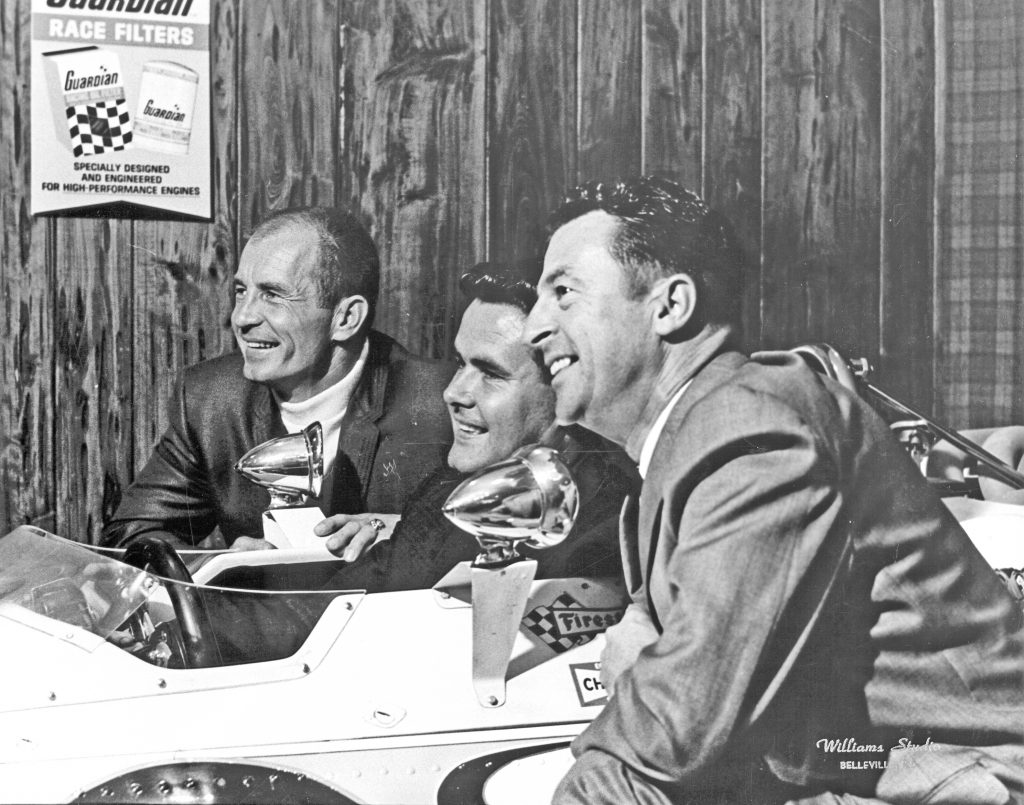
Brock Yates Cannonballs
The first event for a Nichels-built car was the 24-Hour Daytona Continental on February 4th and 5th. Entered in this race was a Nichels Engineering Dodge Dart Trans-Am car built for a race team entered by journalist Brock Yates of Castille, New York. Sharing the driving duties with Yates was another New Yorker, road racing veteran Charles Krueger. The two-man team entered their Nichels Dart in the Touring Division of the 24 hour race, and took the field by surprise. Starting in 36th spot, they wheeled their Dodge to the front of their class and kept it there. Sharing the track with Ferraris and GT Fords, Yates and Krueger earned their road-racing stripes by clawing their way through the multi-division field containing the likes of Dan Gurney, Chris Amon, Lorenzo Bandini, A. J. Foyt, Bruce McLaren, and Mario Andretti. As they crossed the 20 hour mark they found themselves in the lead with only a handful of hours to go. In the end, their victory in sight, they burned a piston, crippling their efforts. But they kept at it and brought their mount in at 15th place overall, a tremendous showing for their efforts.
With the road racing out of the way, next on the agenda was the ARCA 250 on February 19th, then the two 100 mile Daytona 500 qualifying races on February 24th, followed by the Permatex 300 (for Modified-Sportsman stock cars) on February 25th, with the culmination of Daytona Speed Weeks with 500 on February 26th.
The ARCA race found Ralph Latham, in a 1966 Plymouth, holding off defending ARCA Champion Iggy Katona for the victory. Chrysler products took the pole, won the race and captured four of the top 10 spots.
Next were the two qualifying races. Driver LeeRoy Yarbrough and new chief mechanic Mario Rossi won the first race in the 1967 Jon Thorne Dodge Charger. Chrysler products took eight of the top 10 spots with Nichels’ own car, the 1967 No. 99 Plymouth driven by Goldsmith in third place. The second 100 mile qualifier was won by Fred Lorenzen in a 1967 Ford Fairlane. Chrysler products again fared well with four finishing in the top 10. But this race revealed a weak spot in the Chrysler effort, low fuel mileage. The Hemi engines were demandingly thirsty for fuel at the horsepower levels they were running. This was not a good omen.
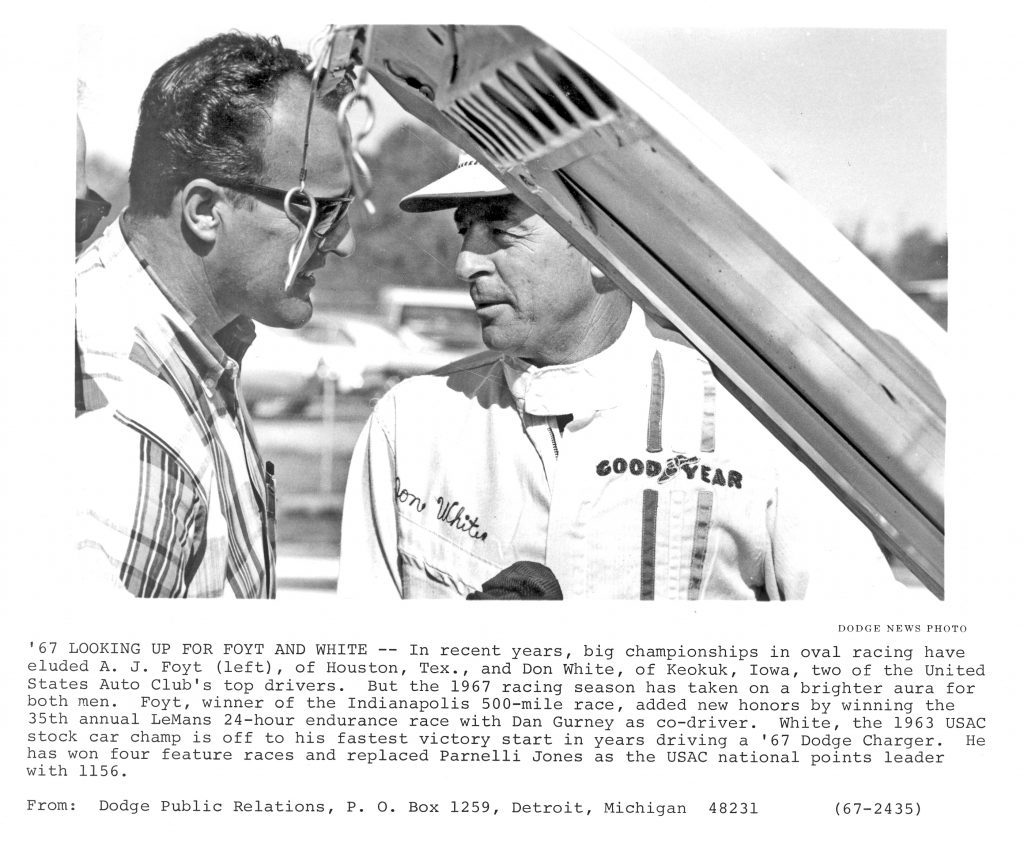
Storming Sportsman
In an effort to gain some data on performance, Paul Goldsmith was entered in the Permatex 300, a 300 mile contest for Modified-Sportsman cars. Also entered from the NASCAR Grand National ranks was Jim Paschal piloting a Friedkin Enterprises entry. Both Mopar drivers were running 1964 Plymouths, with the newly legal (for Modified-Sportsman) 426 Hemi engines. Their entry in this division was not taken well at all by the regular division competitors. Historically, the Modified-Sportsman division contest consisted of mostly weekend racers, who competed at local tracks. These men were no less competitive than the Grand National drivers, but they had nowhere near the financing of the career racers.
The annual Daytona race for Modified-Sportsman teams was a way to cash in early in the season and gather financial support for their efforts for the upcoming year. Working long hours in family owned garages through the week so they could compete on weekends at their local tracks, was more a vocation, rather than a full-time occupation. It was small town racers chasing a dream. When the regular Modified-Sportsman drivers looked up at the scoring stand at the end of qualifying, they saw the name of Paul Goldsmith, on the pole, with a qualifying speed of 179.551, breaking the existing Modified-Sportsman track record by over nine miles per hour. Not only did Goldsmith shatter the qualifying speed record, he shattered a lot of Modified-Sportsman driver’s hearts.
It didn’t end at qualifying. Goldy took the lead from the green flag and led almost the entire race, at one point carrying a two lap lead. Then on the 109th lap, Paul was forced to pit for tires. His record setting speeds had left him without enough rubber to finish the race. Goldy’s victory was lost in the pits with a 33 second stop. The other Grand National competitor running in top-notch equipment, Jim Paschal, had his own pit problems, but they weren’t severe enough to cost him the race. Before it was over Goldsmith closed the gap, but not enough to prevent Paschal from capturing the victory. When the 300 miler was over, race officials gave Goldsmith’s gas tank a good going over to see if there were any modifications that could explain how he was able to get 36 laps out of a single tank of fuel. Upon inspection, NASCAR officials were amazed to see that Goldy’s gas tank held precisely 22.0 gallons, as required by the rules.
With all of the ceremonies leading up to NASCAR’s biggest race of the year now completed, it was time to see who’d been working hardest behind the scenes over the winter months. Although no one had worked harder than the “Go-Fast Factory” crew at Nichels Engineering, the Ford teams (and Bud Moore’s Mercury entries) were by no means slackers. In fact, much had been going on since Chrysler’s stellar performance on the high bank superspeedways in 1966, not to mention Cotton Owens’ and David Pearson’s national championship run. Under the able guidance of Ford Racing Chief Jacque Passino and Ford’s key stock car racing engineer, Charlie Gray, the blue-oval carmaker was much more ready for Daytona than anyone had anticipated.
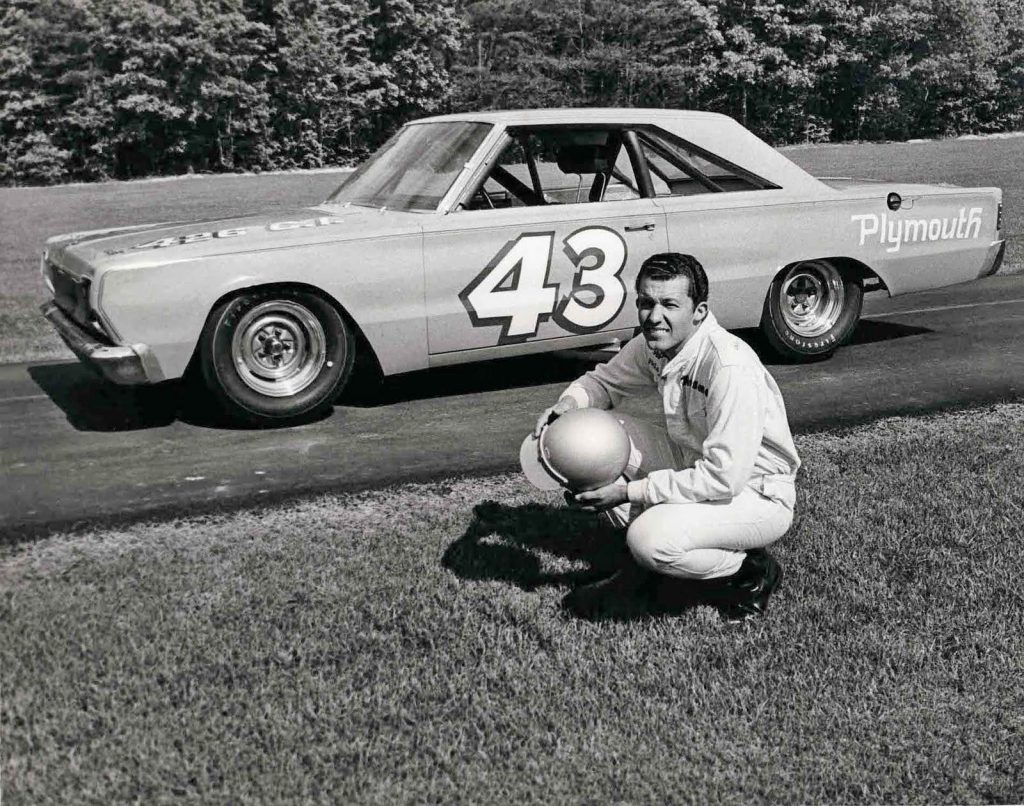
Ford Challenges
While Ford Motor Company’s management was focused on its other racing objectives such as LeMans and Indianapolis, Charlie Gray and his stock car engineering team were tackling the challenges brought on by NASCAR’s rapidly increasing speeds and implementation of car body inspection templates. Under Gray’s direction his team had taken the front end off a 1966 Ford Galaxy, narrowed it and placed it on a 1967 Ford Fairlane. This gave them a narrower and lighter car. In addition, Ford had been successful in convincing NASCAR that their new intake manifold and exhaust system were indeed available to the buying public, making them legitimate under NASCAR’s racing rules.
The combination of the new intake manifolds systems and carburetion was estimated to be giving Ford a 40 horsepower gain. In addition, Gray and the Ford engineering staff learned that the new lighter and narrower Fairlanes required a spoiler. Extensive wind tunnel testing had given Ford engineers two options for race conditions at Daytona. The most down force was obtained by using 45 degree spoiler, and it was the position of Charlie Gray when he made his presentation to the various Ford drivers, that the 45 degree spoiler would keep the car “pretty well planted.” But, if the driver was willing to run “loose,” Ford engineers could setup the car with a 30 degree spoiler. For the 1967 Daytona 500, the scheduled drivers of 1967 Ford racecars were Fred Lorenzen, Cale Yarborough, A. J. Foyt, Dick Hutcherson, Darel Dieringer, Mario Andretti, Henley Gray, and Sonny Hutchins. Only Andretti elected to run the 30 degree spoiler, using the old adage, “loose is fast.”
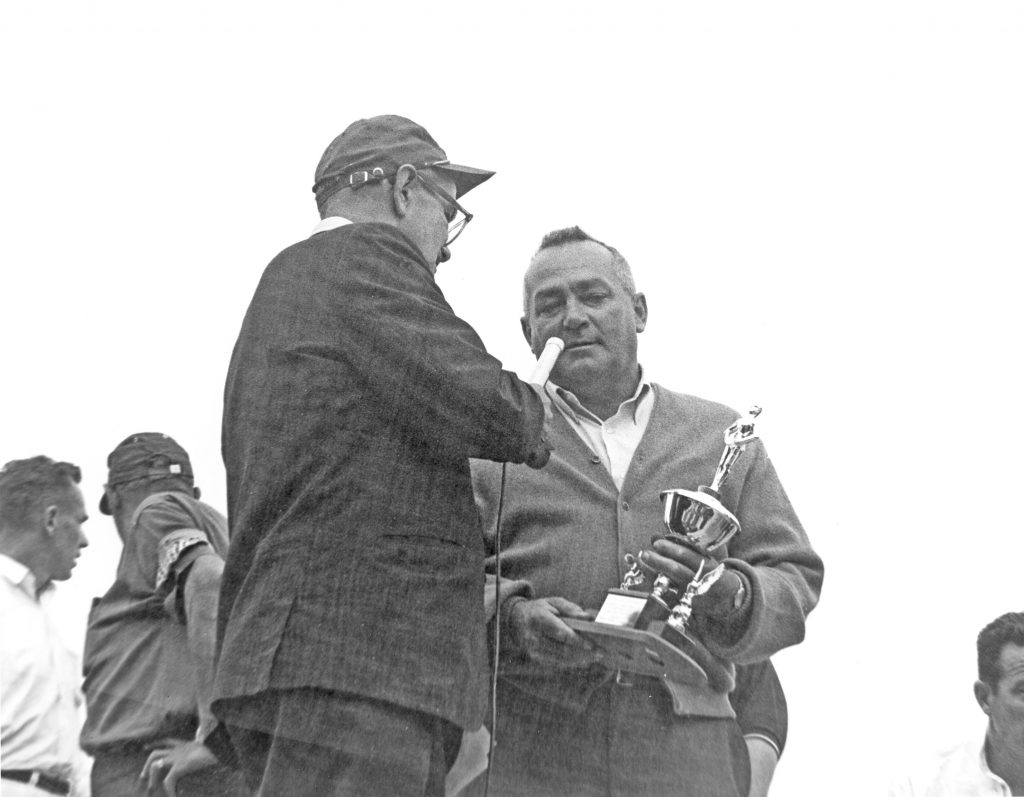
Race Day
On the next day, in front of over 94,000 race fans, the ninth annual Daytona 500 took place in bright, but windy conditions that chilled many of those in the grandstands. Chrysler qualifying efforts were solid with Richard Petty on the front row, LeeRoy Yarbrough in his Jon Thorne Dodge on the second row, Paul Goldsmith on the inside of the fourth row and Buddy Baker in the Ray Fox Dodge on the fifth row. All of these particular Chrysler entrants were running new 1967 equipment for the big race. Ford was equally present in the top 10 spots with Fred Lorenzen in the No. 28 Holman-Moody Fairlane, A. J. Foyt in the No. 27 Banjo Matthews car, Darel Dieringer in the No. 26 Junior Johnson mount, Cale Yarborough in the No. 21 Wood Brothers entry and Dick Hutcherson in the No. 29 Bondy Long car.
The race got off to a predicable start with the lead changing hands after just the first lap. A. J. Foyt, LeeRoy Yarbrough and Buddy Baker all took turns leading as the tire rubber warmed up and the speeds increased. Then seemingly out of nowhere, 26 year-old USAC racing star and former Nichels driver, Mario Andretti sprinted to the lead on lap 23. After having started in 12th position, it didn’t take long for the two-time USAC Indy car champion to capture the attention of the NASCAR fans. Andretti’s car running in the high groove was so seemingly loose that fans cringed every time magnificent Mario came around the huge 2.5 mile tri-oval. Running with the leaders almost immediately, Andretti, in just his third Daytona race was clearly coming into his own as a stock car driver.

The complexion of the race began to change when Goldsmith, running in second place, in the No. 99 Nichels Engineering Plymouth, spun wildly, finally ending up on the track apron, damaging his suspension. Goldy wrestled his Mopar back on the track, and was back in pursuit of the leaders post-haste. Not longer after, Don White, in his No. 2 Nichels Engineering Dodge Charger, cut a tire on lap 43, his car spinning out of control, creating a pileup that collected H. B. Bailey, fellow “Keokuk Komet” Ramo Stott and John Sears. The crash ultimately ended White’s day. Other top drivers fell out in quick order with blown engines, broken suspensions and high-speed crashes.
In the meantime, Mario kept his foot to the floor while the tail of his Holman-Moody prepared Ford Fairlane swung wildly through almost every turn, his crew watching and waiting for Mario to eventually lose it. Ralph Moody, crew chief Jake Elder, engine builder Waddell Wilson and the rest of Andretti’s crew couldn’t believe what they were witnessing. They knew that Mario had been quite particular about the car’s setup over the last few days and that Moody had personally seen to it that Andretti’s setup was exactly as Mario requested. Now it was clear why. Several racing stars took their best shot at the leader, in fact David Pearson had his No. 6 Cotton Owens Dodge in the lead as late as the 158th lap, till his engine let go. From there it virtually all Andretti, running as far as 22 seconds ahead of his closest competitor when the race ended with the final two laps under yellow.
Ford had won the first battle of the superspeedways for 1967. Chrysler had fared well with six finishers in the top 10, but Ronney Householder and Ray Nichels were certainly not pleased. They had seen their teams experience engine, drivetrain and suspension failures, to go along with more tire problems than they cared to contemplate. There was much to do, that was evident.
The Nichels teams headed back north to prepare Paul Goldsmith’s car for the March race at Bristol and Don White’s equipment for his next NASCAR race at Atlanta in April. The good news for Don was that the USAC stock car schedule didn’t start until late May, giving White, the Nichels staff and Chrysler engineering time to fully prepare for the upcoming season.

